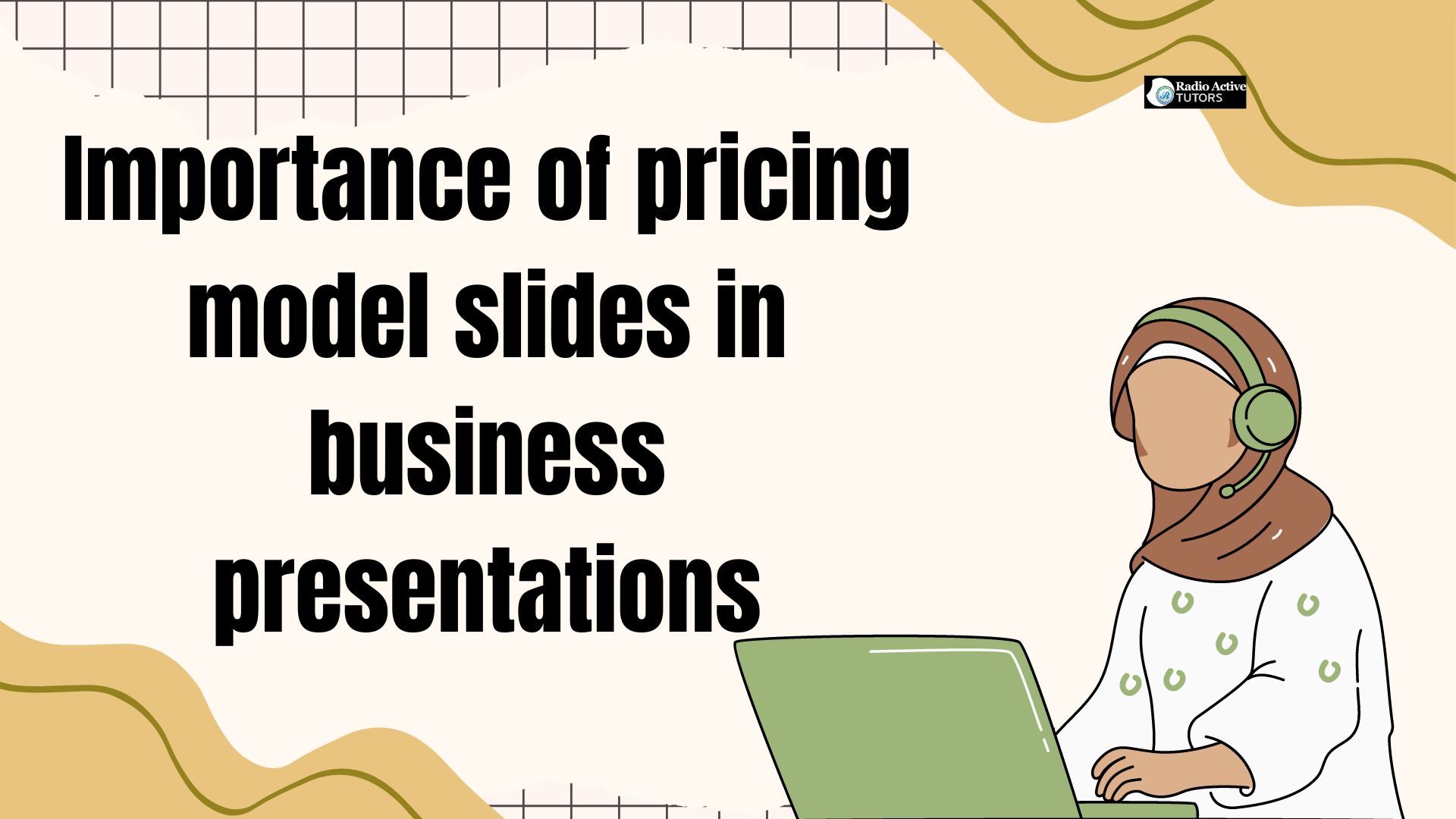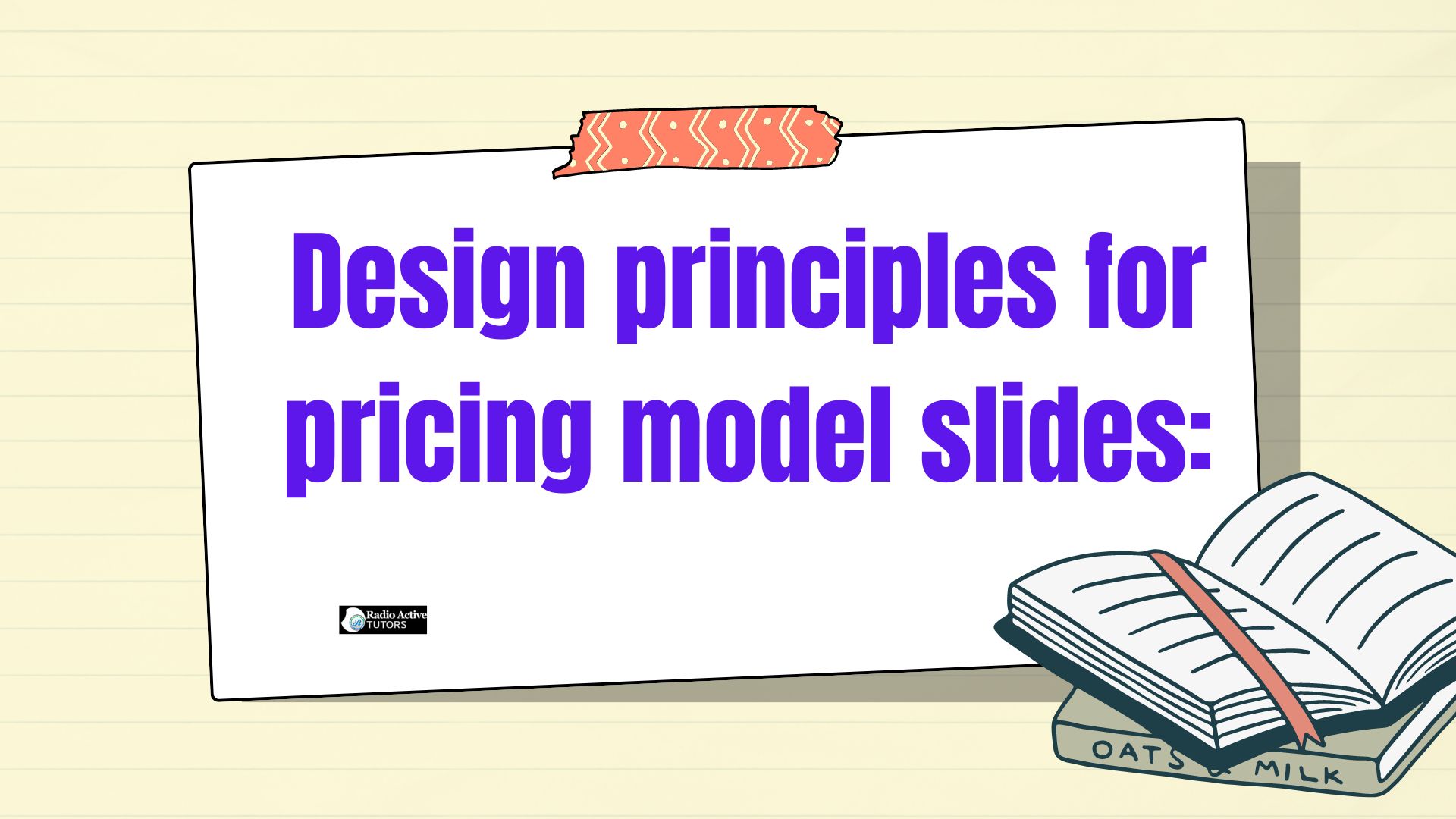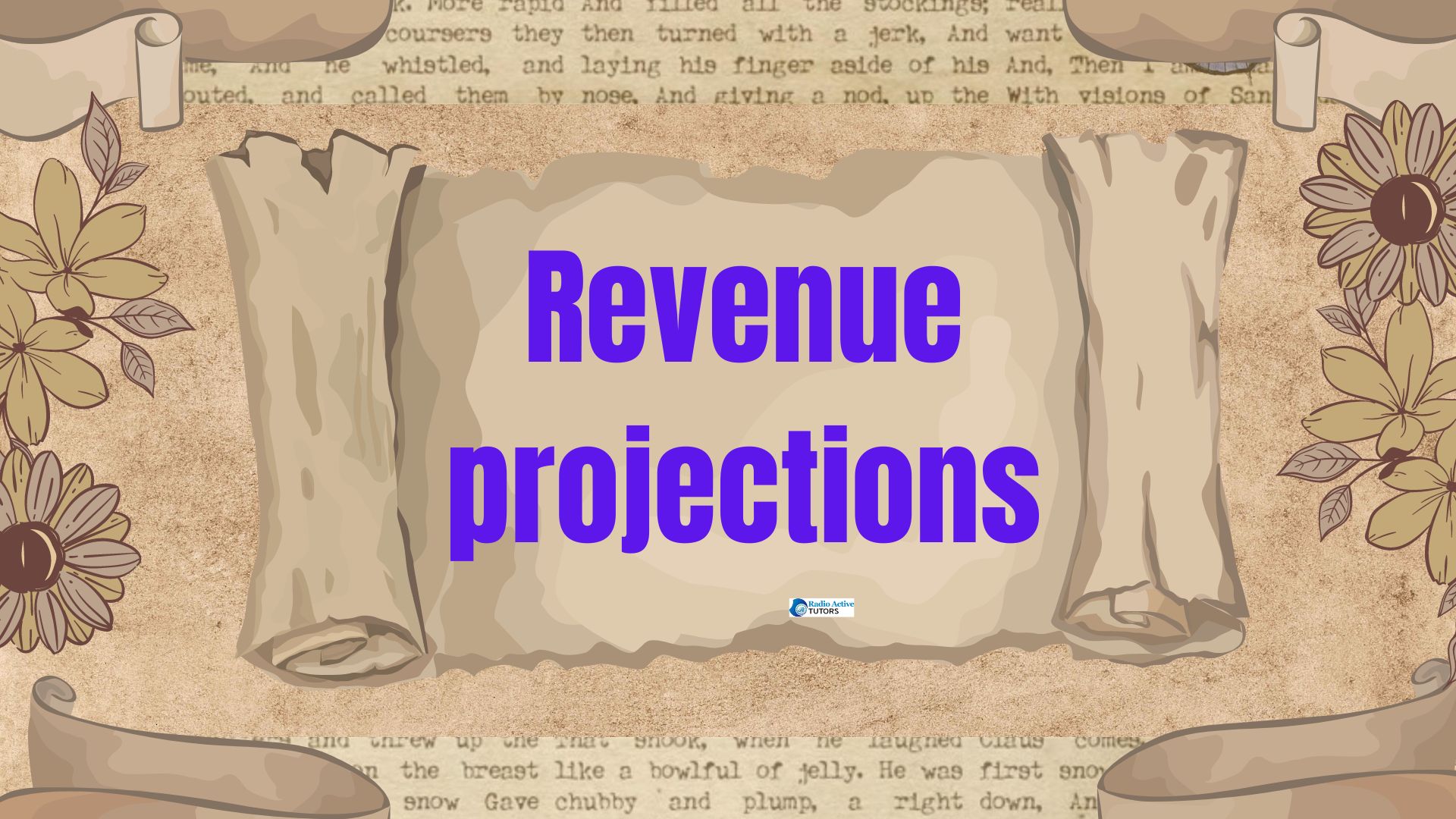Table of Contents
I. Introduction to Pricing Model Slides
II. The Basics of Pricing Models
III. Crafting Effective Pricing Model Slides
IV. Components of Pricing Model Slides
V. Case Studies: Exemplary Pricing Model Slides
VI. Common Mistakes to Avoid in Pricing Model Slides
VII. Tips for Delivering Pricing Model Slides
VIII. Tools and Resources for Creating Pricing Model Slides
IX. Integrating Pricing Models into Business Strategies
X. Frequently Asked Questions (FAQs)
I. Introduction to Pricing Model Slides
- Importance of pricing model slides in business presentations

In the landscape of business presentations, the significance of pricing model slides cannot be overstated. These slides serve as the backbone of any pricing strategy discussion, offering a structured framework to communicate the value proposition, cost breakdown, and revenue projections of a product or service. They provide clarity and transparency, enabling stakeholders to grasp the intricacies of the pricing strategy effortlessly.
Moreover, pricing model slides play a pivotal role in aligning internal teams and external partners by clearly outlining the rationale behind pricing decisions. As such, mastering the art of crafting effective pricing model slides is indispensable for businesses seeking to optimize their revenue streams and drive sustainable growth in today’s competitive market environment.
- Overview of what pricing model slides entail
An overview of pricing model slides reveals their essential role in business presentations. These slides encapsulate the core elements of a company’s pricing strategy, including the methodology for determining product or service prices, the factors influencing pricing decisions, and the anticipated revenue streams. They often feature detailed breakdowns of costs, pricing tiers, and potential discounts, providing a comprehensive view of the pricing structure.
Additionally, pricing model slides may incorporate market analysis, competitor pricing comparisons, and projections of customer demand to offer a holistic understanding of the pricing landscape. By presenting this information in a clear and organized manner, pricing model slides empower presenters to convey the value proposition effectively and facilitate informed discussions among stakeholders.
II. The Basics of Pricing Models
The basics of pricing models form the foundation of pricing model slides, providing a fundamental understanding of how prices are determined and structured within a business. Pricing models encompass various methodologies and approaches used to set prices for products or services, taking into account factors such as production costs, market demand, competitor pricing, and perceived value.
Common pricing models include cost-based pricing, where prices are determined by adding a markup to production costs, and value-based pricing, which considers the perceived value of a product or service to the customer. Other pricing models may incorporate dynamic pricing strategies, tiered pricing structures, or subscription-based models, depending on the nature of the business and its market positioning. By outlining the basics of pricing models within pricing model slides, businesses can provide stakeholders with a solid understanding of the principles guiding their pricing strategies, laying the groundwork for informed decision-making and strategic alignment.
III. Crafting Effective Pricing Model Slides
- Understanding the audience: Tailoring the presentation to resonate with stakeholders
Understanding the audience is paramount in crafting effective pricing model slides that resonate with stakeholders. Tailoring the presentation to align with the needs, preferences, and knowledge level of the audience enhances engagement and comprehension. For instance, executives may require a high-level overview focusing on strategic implications and financial impact, while sales teams may benefit from a more granular exploration of pricing tactics and customer segmentation.
By incorporating relevant data, examples, and visuals that speak directly to the concerns and objectives of each stakeholder group, presenters can ensure that the pricing model slides effectively communicate the value proposition and garner support for the proposed pricing strategy. This personalized approach fosters buy-in and fosters productive discussions, ultimately driving consensus and implementation success.
- Design principles for pricing model slides:

In crafting effective pricing model slides, adhering to design principles is crucial for maximizing impact and clarity. Firstly, simplicity is key; slides should convey information concisely and avoid clutter. Clear, legible fonts and a consistent color scheme enhance readability and visual appeal. Secondly, visual elements such as charts, graphs, and diagrams should be used strategically to illustrate key points and data trends. Thirdly, hierarchy and organization aid in guiding the viewer’s attention and understanding the flow of information.
Additionally, leveraging white space effectively can create balance and prevent overcrowding. Finally, maintaining consistency in design elements throughout the presentation lends professionalism and coherence to the overall message. By applying these design principles, pricing model slides can effectively convey complex pricing strategies in a compelling and digestible format.
- Utilizing data visualization techniques to enhance understanding
Utilizing data visualization techniques is integral to crafting effective pricing model slides that enhance understanding and engagement. By transforming raw data into visually appealing charts, graphs, and infographics, presenters can effectively communicate complex pricing information in a clear and intuitive manner. Visual representations of pricing structures, revenue projections, and cost breakdowns allow stakeholders to grasp key insights at a glance, facilitating quicker decision-making and informed discussions.
Moreover, interactive elements such as dynamic charts or slide animations can further engage the audience and reinforce key points. By leveraging data visualization techniques, pricing model slides become powerful tools for conveying the rationale behind pricing strategies and driving alignment among stakeholders.
IV. Components of Pricing Model Slides
- Pricing strategy overview
A pricing strategy overview is a fundamental component of pricing model slides, providing a comprehensive understanding of the approach taken to set product or service prices. This section typically outlines the overarching goals and objectives of the pricing strategy, such as maximizing profitability, capturing market share, or aligning with perceived value. It delves into the various pricing methods employed, whether cost-based, competition-based, value-based, or a combination thereof, and elucidates the rationale behind the chosen approach.
Additionally, the pricing strategy overview may address pricing tactics such as discounts, bundling, or dynamic pricing, as well as considerations for pricing elasticity and market segmentation. By articulating the overarching principles guiding pricing decisions, this section sets the stage for the detailed analysis and implementation strategies presented in subsequent slides, ensuring alignment and clarity among stakeholders.
A cost breakdown analysis is a crucial component of pricing model slides, offering a detailed examination of the various expenses incurred in producing and delivering a product or service. This section typically itemizes both direct and indirect costs, such as raw materials, labor, overhead, and distribution expenses. By providing transparency into cost structures, businesses can accurately determine the minimum price required to cover expenses and achieve profitability targets.
Moreover, a thorough cost breakdown analysis enables informed decision-making regarding pricing adjustments, resource allocation, and cost-saving opportunities. Presenting this information in a clear and organized manner within pricing model slides allows stakeholders to understand the underlying cost drivers and their implications for pricing strategy, fostering alignment and strategic decision-making.
- Value proposition alignment
Value proposition alignment is a critical element within the components of pricing model slides, ensuring that the pricing strategy resonates with the perceived value offered to customers. This section focuses on articulating the unique benefits, features, and solutions that the product or service provides to its target market. By highlighting how the pricing strategy aligns with the value proposition, businesses can justify the price point and differentiate themselves from competitors.
This alignment reinforces customer perceptions of fairness and justifies the premium associated with the offering. Moreover, it facilitates effective communication of the product’s value proposition to internal stakeholders and external partners, fostering buy-in and support for the pricing strategy. By clearly demonstrating how the pricing model aligns with the value delivered to customers, this section enhances understanding and confidence in the pricing strategy among all stakeholders.

Revenue projections are a pivotal aspect of the components of pricing model slides, providing insights into the expected financial outcomes of the pricing strategy over a specified period. This section typically involves forecasting future revenue streams based on factors such as pricing tiers, sales volume projections, and anticipated market demand. By incorporating data-driven analyses and scenario planning, businesses can assess the potential impact of different pricing strategies on revenue generation.
Additionally, revenue projections enable stakeholders to evaluate the feasibility and profitability of the proposed pricing model and make informed strategic decisions. Presenting clear and realistic revenue projections within pricing model slides fosters transparency and accountability, guiding stakeholders in understanding the financial implications of the pricing strategy and aligning expectations for performance outcomes.
- Pricing tiers or packages
Pricing tiers or packages play a significant role in the components of pricing model slides, delineating the different options available to customers and their corresponding features, benefits, and price points. This section typically presents a structured breakdown of various pricing tiers or packages, each tailored to meet the diverse needs and preferences of target market segments. By offering differentiated pricing options, businesses can cater to different customer segments, maximize value perception, and capture a broader market share.
Furthermore, presenting pricing tiers or packages within pricing model slides enables stakeholders to assess the potential revenue impact of each option and make informed decisions regarding pricing strategy optimization. Clear communication of pricing tiers or packages fosters transparency and enhances customer understanding, ultimately driving sales and revenue growth.
V. Case Studies: Exemplary Pricing Model Slides
Case studies showcasing exemplary pricing model slides serve as valuable benchmarks for businesses seeking to optimize their pricing strategies. These case studies highlight real-world examples of pricing model slides that effectively communicate complex pricing concepts and drive business outcomes. By analyzing these case studies, stakeholders can glean insights into best practices, innovative approaches, and successful implementation strategies.
Moreover, studying exemplary pricing model slides allows businesses to identify opportunities for improvement and innovation within their own pricing strategies. From startups to multinational corporations, case studies offer actionable insights and inspiration for crafting compelling pricing model slides that resonate with stakeholders and drive sustainable growth.
VI. Common Mistakes to Avoid in Pricing Model Slides
- Overcomplicating the presentation with unnecessary details
Overcomplicating the presentation with unnecessary details is a common mistake to avoid when creating pricing model slides. While it may be tempting to include every piece of data or analysis, inundating the audience with excessive information can lead to confusion and dilute the core message. Instead, presenters should focus on highlighting the most relevant and impactful insights that support the pricing strategy. By prioritizing clarity and simplicity, pricing model slides can effectively convey key concepts and facilitate meaningful discussions. Avoiding the temptation to overcomplicate the presentation ensures that stakeholders can grasp the key points efficiently, leading to more productive decision-making and alignment.
- Failing to address potential objections or concerns
Failing to address potential objections or concerns is a critical mistake to avoid when crafting pricing model slides. Ignoring potential objections or concerns can undermine the credibility of the pricing strategy and hinder stakeholder buy-in. It is essential to anticipate and proactively address common objections or concerns, such as perceived value, affordability, or competitive pricing. By acknowledging these concerns within the pricing model slides and providing compelling rebuttals or solutions, presenters can instill confidence in the pricing strategy and mitigate resistance from stakeholders. Addressing objections head-on demonstrates transparency and readiness to engage with stakeholders’ perspectives, fostering trust and collaboration in the decision-making process.
- Neglecting to update pricing model slides regularly
Neglecting to update pricing model slides regularly is a significant mistake to avoid in crafting effective presentations. Pricing strategies and market dynamics are subject to constant change, making it essential to keep pricing model slides up-to-date with the latest information and insights. Failure to do so can result in outdated or inaccurate pricing information being presented to stakeholders, leading to misunderstandings or misalignment.
Regular updates ensure that pricing model slides accurately reflect evolving market conditions, competitive landscapes, and business objectives, enabling stakeholders to make informed decisions based on current data. By prioritizing regular updates to pricing model slides, businesses can maintain relevance and effectiveness in their pricing strategies and presentations, ultimately driving better outcomes and stakeholder engagement.
VII. Tips for Delivering Pricing Model Slides

- Practicing effective communication skills
Practicing effective communication skills is essential when delivering pricing model slides to stakeholders. Clear and concise communication helps ensure that the audience understands the key insights and implications of the pricing strategy. Presenters should strive to articulate complex pricing concepts in simple terms, using language that resonates with the audience’s level of expertise. Additionally, maintaining eye contact, using engaging body language, and speaking with confidence can enhance the delivery of pricing model slides and capture the attention of stakeholders.
Moreover, actively listening to questions and feedback from the audience fosters an open dialogue and demonstrates a commitment to addressing concerns or clarifying uncertainties. By honing effective communication skills, presenters can effectively convey the value and rationale behind the pricing strategy, fostering alignment and support among stakeholders.
- Handling questions and objections confidently
Handling questions and objections confidently is crucial when delivering pricing model slides to stakeholders. Anticipating potential questions or objections and preparing thoughtful responses in advance can help presenters address concerns effectively during the presentation. When faced with questions, presenters should listen attentively, restate the question to ensure understanding, and provide clear and concise answers supported by data or evidence from the pricing model slides. If faced with objections, presenters should remain calm and composed, acknowledging the concerns raised and offering persuasive explanations or solutions to address them.
Maintaining a confident demeanor and demonstrating expertise in the subject matter instills trust and credibility with the audience, ultimately fostering greater acceptance and buy-in for the pricing strategy presented in the slides.
- Leveraging storytelling to make a compelling case
Leveraging storytelling can significantly enhance the effectiveness of delivering pricing model slides to stakeholders. By weaving a narrative around the pricing strategy, presenters can capture the audience’s attention and create a more engaging and memorable experience. Storytelling allows presenters to contextualize complex pricing concepts within real-world scenarios, making them more relatable and understandable for the audience.
Whether recounting customer success stories, illustrating challenges overcome, or outlining the journey to develop the pricing strategy, storytelling adds depth and emotional resonance to the presentation. By crafting a compelling narrative, presenters can effectively convey the value proposition, rationale, and benefits of the pricing strategy, inspiring stakeholders to embrace and support the proposed approach outlined in the pricing model slides.
VIII. Tools and Resources for Creating Pricing Model Slides
There is a plethora of tools and resources available to assist in creating pricing model slides that effectively communicate pricing strategies. Presentation software such as Microsoft PowerPoint, Google Slides, or Apple Keynote provides versatile platforms for designing and organizing pricing model slides with ease. Additionally, specialized data visualization tools like Tableau, Chartio, or Infogram can help transform complex pricing data into visually appealing charts, graphs, and infographics. For those seeking ready-made templates and design inspiration, online marketplaces such as Envato Elements, SlideModel, or Creative Market offer a wide range of professionally designed pricing model slide templates that can be customized to suit specific needs.
Furthermore, resources such as pricing strategy books, industry reports, and online courses can provide valuable insights and guidance for developing effective pricing models and accompanying slides. By leveraging these tools and resources, businesses can create compelling pricing model slides that effectively communicate pricing strategies and drive alignment among stakeholders.
IX. Integrating Pricing Models into Business Strategies
- Aligning pricing strategies with overall business objectives

Aligning pricing strategies with overall business objectives is paramount when integrating pricing models into business strategies. Pricing decisions should not be made in isolation but rather should be closely aligned with the broader goals and objectives of the organization. This alignment ensures that pricing strategies effectively support the overarching business strategy, whether it’s focused on revenue growth, market expansion, customer retention, or profitability.
By understanding the specific needs and priorities of the business, pricing models can be tailored to optimize outcomes and drive sustainable success. Moreover, integrating pricing models into business strategies requires ongoing evaluation and adjustment to ensure alignment with evolving market dynamics and business priorities. By aligning pricing strategies with overall business objectives, organizations can maximize the impact of their pricing decisions and achieve their desired outcomes.
- Iterative approach to refining pricing models based on market feedback
An iterative approach to refining pricing models based on market feedback is essential when integrating pricing models into business strategies. Instead of viewing pricing decisions as static, organizations should continuously gather and analyze feedback from customers, competitors, and market trends to inform adjustments to their pricing models. This iterative process allows businesses to adapt quickly to changing market dynamics, identify opportunities for optimization, and address any gaps or shortcomings in their pricing strategies.
By actively soliciting and incorporating market feedback, organizations can refine their pricing models to better meet the needs and expectations of their target audience, ultimately driving competitiveness and enhancing long-term profitability. Embracing an iterative approach to refining pricing models based on market feedback ensures that pricing strategies remain dynamic, responsive, and aligned with the evolving demands of the marketplace.
X. Frequently Asked Questions (FAQs)
- What should I include in my pricing model slides?
- How can I make my pricing model slides more visually appealing?
- What are some common pitfalls to avoid when presenting pricing models?
- How do I determine the right pricing strategy for my product or service?
- Are there any software tools that can help with designing pricing slides?
- How do I handle objections from my audience regarding pricing?
- Should I include competitor pricing information in my presentation?
- How often should I update my pricing model slides?
- Can you provide examples of successful pricing presentations?
- What role does storytelling play in pricing presentations?
